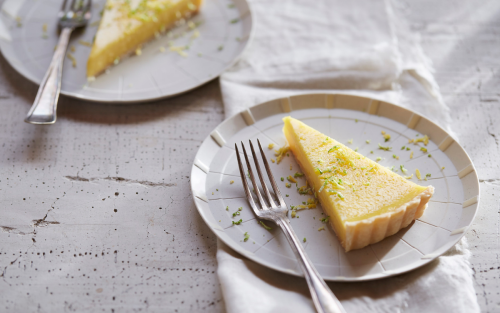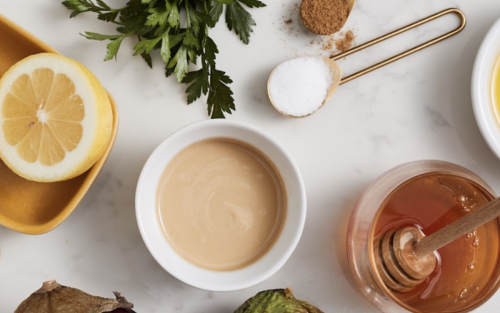
HOW TO KNEAD AND MAKE DOUGH IN A FOOD PROCESSOR
Making a fresh batch of dough in a food processor can be a real-time-saver. Not to mention, the results can look, feel, and taste like other popular methods.
A food processor is your ticket to making fresh and delicious bread, pie crusts, pastries, and pasta in the convenience of your kitchen. Of course, other appliances, like the classic KitchenAid® Stand Mixer, may be preferable for making dough in certain scenarios.
Keep reading to learn step-by-step instructions and helpful tips on how to knead and make dough in a food processor and then you’ll be all set to make a variety of breads and baked goods at home whenever you want.


STEPS FOR MIXING AND KNEADING DOUGH WITH A FOOD PROCESSOR
Certain food processors are equipped with a plastic dough blade for kneading. However, you can opt for the standard multi-purpose metal blade, but you’ll need to keep a close eye on the dough’s progress to make sure it doesn’t get overworked.
These steps for kneading dough in a food processor refer to using the dough blade. If you go with the metal blade, you need to reduce the kneading time by one-third. Remember, these are general directions for making a crust for something like a pizza base or a basic yeast bread like a sourdough bread loaf.
STEP 1: ADD THE DRY INGREDIENTS
Start by adding the dry ingredients to the food processor bowl and then mix by pulsing it 3-4 times.
STEP 2: PREPARE THE YEAST
Proof the yeast by adding warm water to it. Make sure to use a separate bowl for this step.
STEP 3: ADD THE WET INGREDIENTS
Now it’s time to add the wet ingredients to the dry ingredients. The dry ingredients should already be in the bowl and you can add the wet ingredients via the food tube on your appliance.
STEP 4: START PULSING
Pulse for roughly three seconds. Next, add the remaining water through the food tube.
STEP 5: INCREASE THE SPEED
Turn up the food processor to high speed, and process until a dough ball forms. This should only take about 20 seconds.
STEP 6: TURN THE DOUGH
Turn off the food processor and then unplug it and remove the lid. You need to lightly dust the ball with flour before proceeding. Turn over the dough ball so that what was on the bottom, which is typically warmer, is now on top.
STEP 7: KEEP PULSING
Plug the appliance back in, re-attach the lid, and pulse for another 20-30 seconds.
STEP 8: TAKE OUT THE DOUGH
Before anything else, you need to unplug the appliance and take out the lid as well as the blade. Next, remove the dough ball from the bowl.
Once the dough ball is removed, it’s recommended to hand-knead it for 20-30 seconds. This will ensure that everything is fully incorporated and can result in the dough having an elastic and smooth texture.
STEP 9: ALLOW THE DOUGH TO RISE
Give the dough a light coating of olive oil. Then, divide the dough into two and place it back in the work bowl (feel free to use a different bowl, if you’d like), cover it with a damp cloth and allow the dough about 45 minutes to rise.
Whether the dough will be ready to bake after one or two proofs depends on the recipe.
SHOP KITCHENAID® food processors
Enticing creations await with KitchenAid® food processors that push the bounds of culinary expression. With a range of sizes and features to match any maker, these food processors help you chop, mix, puree and even knead dough.
CAN DOUGH BE KNEADED IN ANY FOOD PROCESSOR?
Yes, as long as it has a multipurpose metal blade, you can knead dough in any food processor. A special dough blade is useful but not necessary.
Depending on how many batches you’re making or how large each batch is, you may need to use a large food processor.
Shop KitchenAid® Food Processors, including a KitchenAid® 13-cup food processor with a dough blade. Learn more about food processor sizes and how to find the right fit.
HOW DO I KNOW WHICH BLADE TO USE WHEN MAKING DOUGH IN A FOOD PROCESSOR?
For making dough in a food processor, there are two blade options: the plastic dough blade and the multipurpose metal blade. Both can make a perfect dough but there are some differences. Let’s review.

PLASTIC DOUGH BLADE
This dull plastic blade is specifically designed for dough. It turns and pulls dough rather than slicing through it. Typically, it takes a bit longer for the dough ball to form but the benefit is that it is less likely to overheat.

MULTIPURPOSE METAL BLADE
The metal blade is the faster blade option. It has the ability to form gluten bonds quickly. The speed, however, can generate heat that has the potential to kill the yeast in dough, if kneaded for too long. While it produces desirable results, this blade does require more monitoring of the dough. A multipurpose metal blade is often the choice for certain pie doughs like the one that’s ideal for a beef and vegetable pie.
FOR HOW LONG SHOULD I KNEAD DOUGH WITH MY FOOD PROCESSOR?
A dough should form in approximately 30 seconds to 1 minute. You can tell that dough is ready once it becomes a rough ball that pulls away from the side of the bowl. A dough ball that’s ready to go should have some lustre and a stretchy texture that bounces back after being pulled. After removing the dough from the food processor, you may want to hand-knead it for another 30 seconds or so.
TIPS FOR CREATING DOUGH IN A FOOD PROCESSOR
USE COLD WATER: Cold or chilled water can help prevent the dough from overheating. Too much heat is dangerous for dough as it can kill the yeast necessary for it to rise. Heat can also melt the butter or fat that’s present in biscuit dough and crusts that are commonly used for honey butter biscuits or herbed zucchini quiche, resulting in them becoming dense instead of flaky.
MAKE SMALLER BATCHES: Your average 10 or 12-cup food processor can make roughly 1.5 pounds (680 grams) of dough, which is equivalent to a recipe that calls for 2 cups (480 grams) or 3 cups (720 grams) of flour to yield about one loaf of bread.
If you want to make dough in a food processor, you may have to go with smaller batches. Select a KitchenAid® Stand Mixer if you want to make multiple loaves at once.
PULSE ONLY: Food processor dough forms so quickly that the pulsing function can deliver better control over the kneading process. You want to avoid over-kneading, so pulse in intervals and keep a watchful eye on the dough. You’ll know it’s ready once it starts pulling away from the sides of the bowl.
WHAT OTHER COUNTERTOP APPLIANCES CAN HELP ME KNEAD DOUGH?
The stand mixer is the most common countertop appliance for making dough. The drawback is that kneading usually takes a bit longer but there are benefits. The large bowls of stand mixers are perfect for making larger quantities. You will also have greater visibility since a stand mixer is open whereas a food processor is closed.
The kneading action of the dough hook in a stand mixer is great for wetter dough recipes, like those required for some pizzas.
Browse KitchenAid® Food Processors and KitchenAid® Stand Mixers with the dough hook to bring your recipes to life.
DISCOVER MORE FOOD PROCESSOR POSSIBILITIES
-
 Food processor pie crust: easy pie dough recipe & tips | KitchenAid Learn how to make a pie crust from scratch in your food processor. It’s fast & easy. Keep reading for a pie dough recipe & helpful tips.
Food processor pie crust: easy pie dough recipe & tips | KitchenAid Learn how to make a pie crust from scratch in your food processor. It’s fast & easy. Keep reading for a pie dough recipe & helpful tips. -
 How To Use a Food Processor: A Detailed Guide See this detailed guide on how to use your food processor and get the most out of it. Recipe inspiration included.
How To Use a Food Processor: A Detailed Guide See this detailed guide on how to use your food processor and get the most out of it. Recipe inspiration included. -
 How to Make Tahini Sauce This recipe can help anyone make delicious tahini sauce that's perfect for many Mediterranean delicacies. Learn which ingredients and tools you need.
How to Make Tahini Sauce This recipe can help anyone make delicious tahini sauce that's perfect for many Mediterranean delicacies. Learn which ingredients and tools you need.










